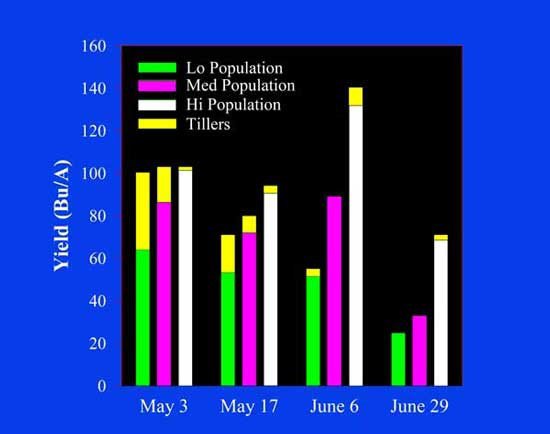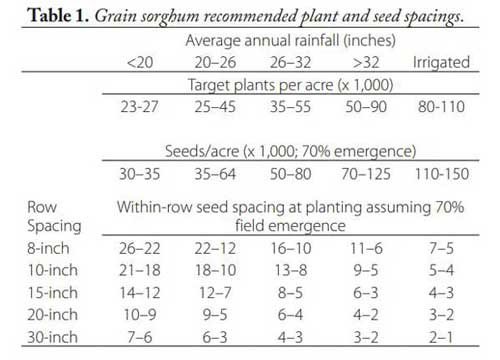Most producers are aware of the recommendation to increase seeding rates for wheat when planting is delayed. We know this is necessary because with later planting the window of opportunity to set fall tillers, the productive tillers in wheat, starts to close. Grain sorghum is a tillering grass crop much like wheat, and as planting is delayed the opportunity for tillers to form and produce productive grain declines.
Research conducted by K-State at St. John demonstrates the relationship between seeding rate, planting date, and the contribution to final yield by tillers.
In Figure 1, for each bar, the yellow represents the contribution to final grain yield from tillers, while the green, purple, and white portion of the bar represents the contribution to yield from the main stems for a low, medium, and high seeding rate. At the earliest planting date seeding rate did not affect yield, with tillers contributing a larger amount of grain at the lower seeding rates. However, as planting dates are moved later, the ability of tillers to form and produce grain is limited.
In order to maintain yield potential with later planting dates, higher seeding rates are necessary to provide enough heads per acre. As planting moves later, producers should be seeding at or slightly above the upper end of the seeding rate range presented in Table 1 of the 2019 Sorghum Management Guide, https://www.bookstore.ksre.ksu.edu/pubs/MF3046.pdf.
Stacy Campbell is an agriculture and natural resources agent for Cottonwood Extension District. Email him at scampbel@ksu.edu or call the Cottonwood Extension District Hays office, 785-628-9430.









